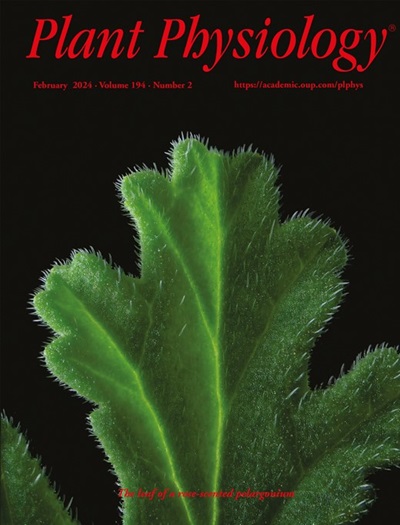水稻富含at的钳状元件家族的保守非编码序列调控染色质环的形成。
IF 6.5
1区 生物学
Q1 PLANT SCIENCES
引用次数: 0
摘要
为了阐明植物染色质环形成的分子机制,需要对线性基因组中的调控元件进行全面的注释。在这里,我们在水稻(Oryza sativa)基因组中鉴定了一个新的保守非编码序列(CNSs)家族。这些序列被称为富含at的钳状元件(ape),由逆向配置的13bp重复单元阵列组成。我们的研究结果表明,在整个粳稻基因组中有611个APE拷贝。单个类人猿的缺失破坏了锚定目标类人猿区域的远程染色质环,适度地重塑了A/B区室、拓扑相关结构域(TADs)和染色质环的轮廓,从而重新连接了环基因的表达,包括那些控制重要农艺性状的基因。因此,猿作为枢纽基序直接介导染色质环,并在室、TADs和环的水平上维持三维基因组的完整性和稳定性。此外,含有大量配对非ape (NA) CNSs的邻近基因组区域更有可能相互作用。这一发现表明NA - CNS对可能以剂量依赖的方式在确定环路频率方面发挥辅助作用,可能通过确保锚位点的配对选择性。我们的研究强调了类人猿和NA CNSs在维持三维基因组结构中的重要性,从而提供了将许多非编码重复元件与其在植物中的分子功能联系起来所需的框架。本文章由计算机程序翻译,如有差异,请以英文原文为准。
The rice AT-rich pincer-like element family of conserved noncoding sequences regulates chromatin loop formation.
The comprehensive annotation of regulatory elements in linear genomes is needed to elucidate the molecular mechanisms underlying chromatin loop formation in plants. Here, we characterized a novel family of conserved noncoding sequences (CNSs) in the rice (Oryza sativa) genome. These sequences, known as AT-rich pincer-like elements (APEs), are composed of 13-bp repeat unit arrays in a reverse-forward configuration. Our findings revealed that there are 611 APE copies across the japonica genome. Deletion of single APEs disrupted the long-range chromatin loops anchoring target APE regions and moderately remodeled the profile of A/B compartments, topologically associating domains (TADs), and chromatin loops, thereby rewiring the expression of looped gene(s) including those controlling important agronomic traits. Thus, APEs function as hub motifs directly mediating chromatin looping and maintaining 3D genome integrity and stability at the levels of compartments, TADs, and loops. Moreover, neighboring genomic regions harboring numerous paired non-APE (NA) CNSs were more likely to interact with each other. This finding suggests that NA CNS pairs might play a helper role in determining loop frequency in a dose-dependent manner, likely by ensuring the pairing selectivity of anchor sites. Our study highlights the importance of APEs and NA CNSs in maintaining 3D genome structure, thereby providing the framework required to link many noncoding repetitive elements to their molecular functions in plants.
求助全文
通过发布文献求助,成功后即可免费获取论文全文。
去求助
来源期刊

Plant Physiology
生物-植物科学
CiteScore
12.20
自引率
5.40%
发文量
535
审稿时长
2.3 months
期刊介绍:
Plant Physiology® is a distinguished and highly respected journal with a rich history dating back to its establishment in 1926. It stands as a leading international publication in the field of plant biology, covering a comprehensive range of topics from the molecular and structural aspects of plant life to systems biology and ecophysiology. Recognized as the most highly cited journal in plant sciences, Plant Physiology® is a testament to its commitment to excellence and the dissemination of groundbreaking research.
As the official publication of the American Society of Plant Biologists, Plant Physiology® upholds rigorous peer-review standards, ensuring that the scientific community receives the highest quality research. The journal releases 12 issues annually, providing a steady stream of new findings and insights to its readership.
 求助内容:
求助内容: 应助结果提醒方式:
应助结果提醒方式:


